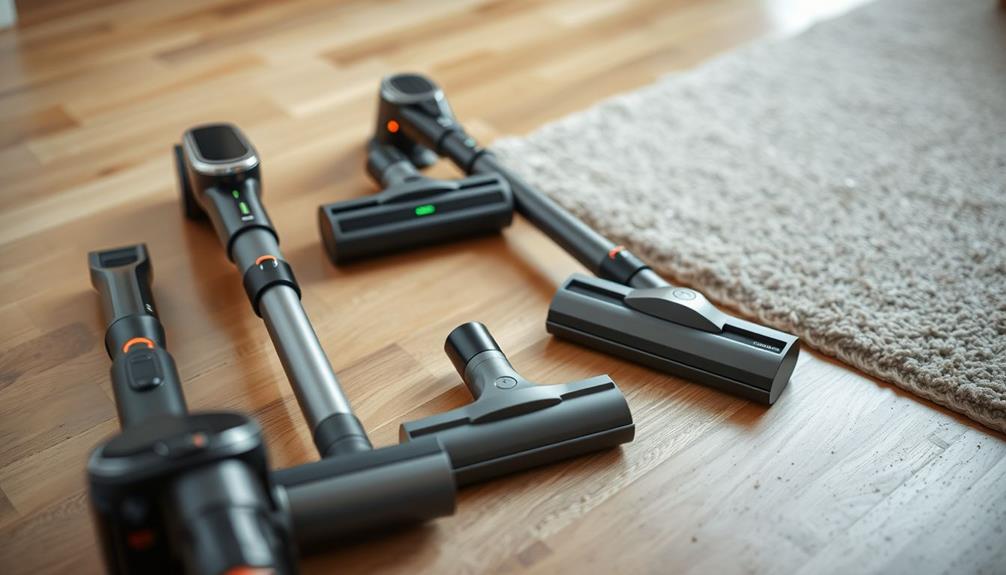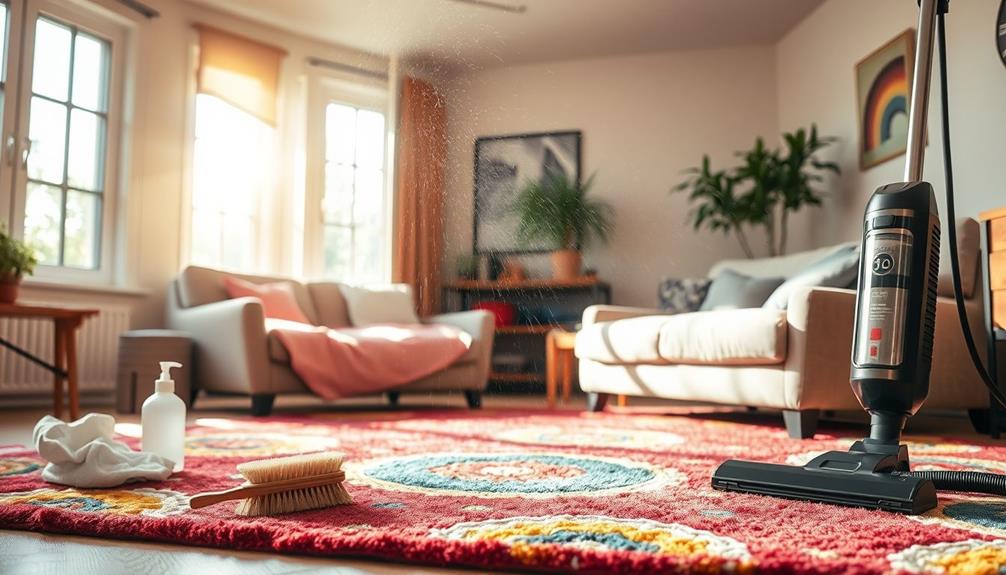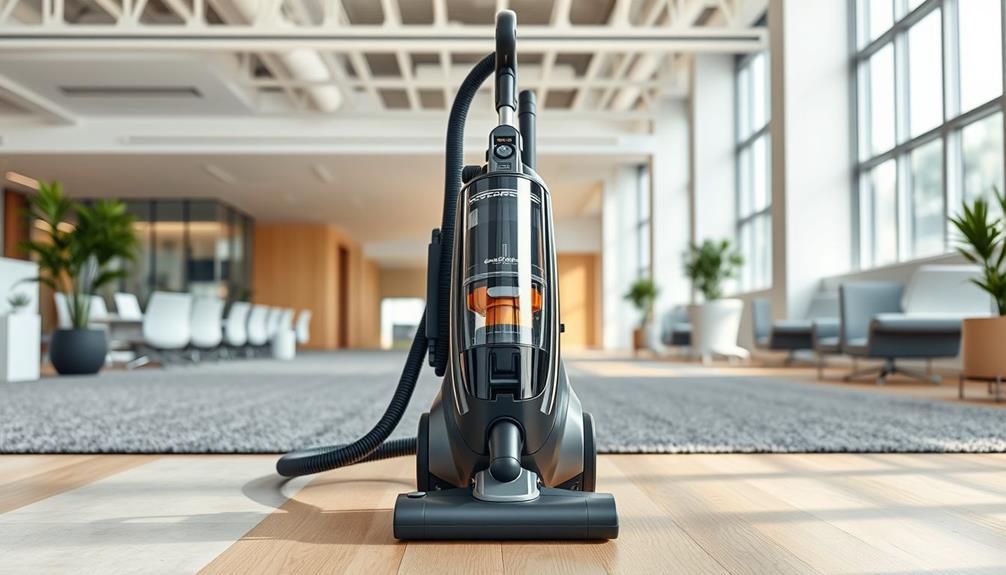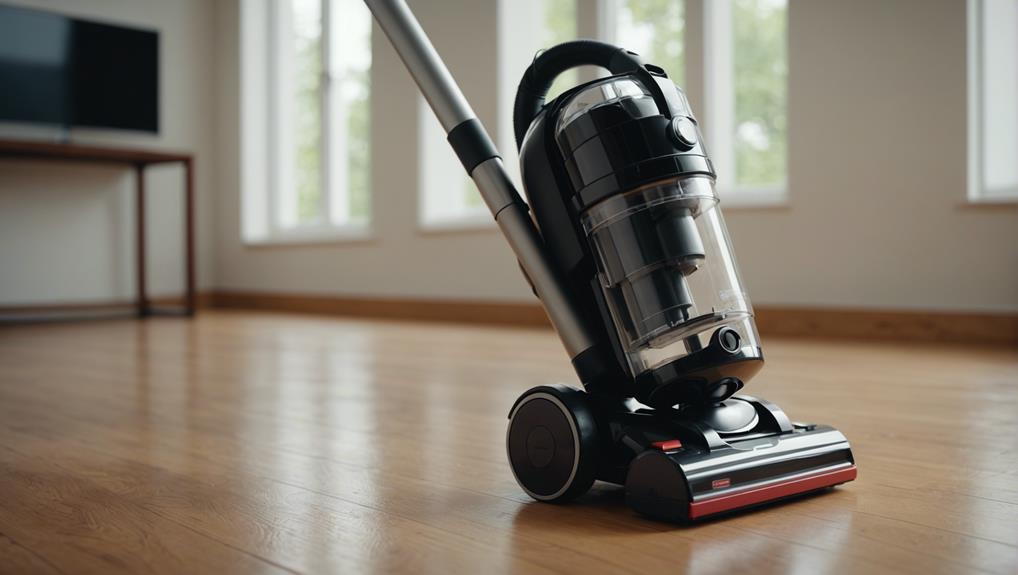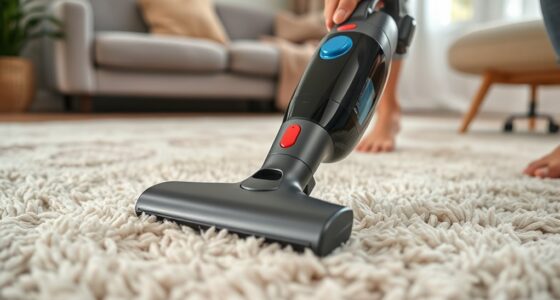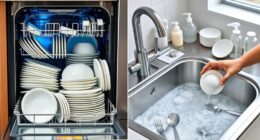When assessing cordless vacuums, it is crucial to consider both battery life and suction power. Most models have a runtime of 15 to 70 minutes, with Dyson vacuums such as the V15 Detect providing up to 60 minutes of use. The V15 also boasts a suction power of 230 AW, ensuring thorough cleaning. Shark models are often more budget-friendly and excel in maneuverability. Other features like smart sensors and specialized attachments for pet hair can improve usability. For more guidance on finding the perfect cordless vacuum, further insights and recommendations are available. Size and weight should also be taken into account when comparing cordless vacuums. Some users may prefer the convenience and ease of use offered by the best compact vacuums, which are typically lighter and more maneuverable in tight spaces. These compact models are ideal for quick cleanups and for individuals with limited storage space. Some of the best compact vacuums may even include innovative features like foldable handles or wall-mounted storage options for added convenience.
Key Takeaways
- Battery Life: Cordless vacuums typically offer runtimes from 15 to 70 minutes, with models like Dyson V15 Detect achieving up to 60 minutes.
- Suction Power: The Dyson V15 Detect leads with 230 AW, while Tineco Pure One S11 provides 130 AW, impacting cleaning efficiency.
- Weight & Maneuverability: Lightweight models like Roidmi S2 (2.6 kg) enhance handling, making them easier to use in tight spaces.
- Dustbin Capacity: Capacities range from 0.2 to 2 liters, with larger bins providing convenience for extended cleaning without frequent emptying.
- Attachments & Features: Specialized attachments improve cleaning performance, with options like hair-detangling heads and smart sensors for automatic suction adjustment.
Key Considerations for Cordless Vacuums
When choosing a cordless vacuum, several key factors can make or break your cleaning experience. First, consider battery life; most models offer runtimes between 15 to 70 minutes, depending on the suction power settings. If you plan to tackle larger areas, you'll want a vacuum that can maintain its runtime on higher settings.
Specialized features like effective performance in budget-friendly options can also enhance your cleaning experience. Speaking of suction power, look for models with high air watts (AW). For instance, the Dyson V15 Detect boasts up to 230 AW, making it effective for various surfaces and especially for picking up pet hair.
Next, think about weight and maneuverability. Lightweight vacuums, like the Roidmi S2 at just 2.6 kg, are much easier to handle in tight spaces.
Dustbin capacity is another consideration; most vacuums range from 0.2 to 0.75 liters, influencing how often you'll need to empty it during cleaning sessions.
Finally, don't overlook attachments. The right tools can enhance your vacuum's cleaning performance, helping you tackle different tasks more efficiently.
Performance Metrics Explained

Understanding performance metrics is key to selecting the right cordless vacuum for your needs. When evaluating cordless vacuum cleaners, consider battery life and runtime. Most models offer runtimes between 15 to 70 minutes, with top-tier options like the Dyson V15 Detect reaching up to 60 minutes on a full charge.
Charge times also vary; many vacuums take between 2 to 4.5 hours to recharge. Additionally, certain brands are known for their reliability and performance, similar to how best men's cologne is often associated with quality and appeal.
Suction power is another critical metric, measured in air watts (AW). The Dyson V15 Detect leads the market at 230 AW, while the Tineco Pure One S11 offers a solid 130 AW. Higher suction power typically translates to better cleaning efficiency.
Dustbin capacity impacts how often you need to empty the vacuum. Smaller models may hold 0.2 to 0.75 liters, while larger ones can accommodate up to 2 liters, making them more convenient for larger cleaning jobs.
Lastly, assess debris pickup performance. For instance, the Tineco Pure One S11 boasts a 99% pickup rate for sand on hardwood floors.
Best Overall Cordless Vacuums

When you're looking for the best overall cordless vacuums, performance and innovative features matter most.
Models like the Tineco Pure One S11 and Dyson V15 Detect stand out for their impressive suction power and smart technologies.
For pet owners, vacuums like the Bissell Pet Hair Eraser Vacuum offer specialized features that enhance hair removal efficiency.
You'll also want to take into account value for money, as some options deliver exceptional results without breaking the bank.
Top Performance Models
If you're in the market for a top-performing cordless vacuum, several models stand out for their exceptional cleaning capabilities. When choosing a vacuum, consider factors like what to look for in a home cleaning service to guarantee you select a model that meets your specific cleaning needs.
The Tineco Pure One S is a fantastic choice, boasting a 90% debris pickup rate across various surfaces, making it one of the best cordless vacuums for everyday use. If you need suction performance that tackles even the toughest messes, the Dyson V15 Detect offers an impressive 230 air watts, making it perfect for sand and fine debris removal.
For those looking for versatility, the Shark Stratos Cordless features automatic power adjustment, which optimizes suction based on detected debris, providing a max runtime of about an hour. This model is great for shifting between different floor types without losing efficiency.
If you have pets, consider the Tineco Pure One S15 Pet, specifically designed to handle pet hair with 120AW of suction power and a 100% pickup rate for large particles.
Innovative Features Highlighted
Each of the top-performing cordless vacuums boasts innovative features that enhance their usability and effectiveness. The Tineco Pure One S11 uses smart sensor technology to automatically adjust suction power based on the type of debris, achieving an impressive 90% debris pickup rate.
Additionally, maintaining a clean home environment is essential for children's health and safety, as it reduces allergens and promotes a healthier play space for kids engaging in outdoor play.
Meanwhile, the Dyson V15 Detect features a built-in piezo sensor that monitors particle counts, dynamically adjusting its suction power to deliver a remarkable 230 air watts of suction power.
The Shark Stratos Cordless utilizes Clean Sense IQ technology, which enhances cleaning efficiency by increasing suction in areas with high debris concentration.
In addition, the Dyson Gen5detect comes with a laser Slim Fluffy cleaner head, illuminating hidden dust and dirt for thorough cleaning.
Lastly, the Samsung Jet 90 stands out with its lightweight design and high-efficiency dust separation system, ensuring effective cleaning on both carpets and hard floors.
These innovative features make these vacuums not only powerful but also user-friendly, allowing you to tackle various cleaning tasks with ease and confidence.
Value for Money
Finding the best value for your money in cordless vacuums can feel like searching for a needle in a haystack. Fortunately, several models stand out for their blend of performance and affordability. The Tineco Pure One S11 is a fantastic choice, boasting a 90% debris pickup rate and smart sensors for automatic suction adjustment, making it a top contender.
If you're after the highest suction power, the Dyson V15 Detect has an impressive 230 air watts, ensuring powerful cleaning, though its premium price may be a sticking point.
Cats, much like the need for a clean environment, thrive in spaces free from excessive allergens and toxins; ensuring a healthy home can enhance your pet's comfort and well-being, which is vital for their emotional attachment cat behavior and emotional attachment.
For a user-friendly option, the Shark Stratos Cordless offers solid performance with automatic power adjustments and a runtime of about one hour. Meanwhile, the Samsung Jet 90 impresses with its lightweight design, striking a balance between power and ease of use at a mid-range price point.
If you're on a tighter budget, the Black & Decker PowerSeries Extreme delivers excellent performance with a competitive price of around $150, providing great value for money with a runtime of 55 minutes.
Ultimately, there's a cordless model out there to fit your needs without breaking the bank.
Specialized Features in Cordless Models
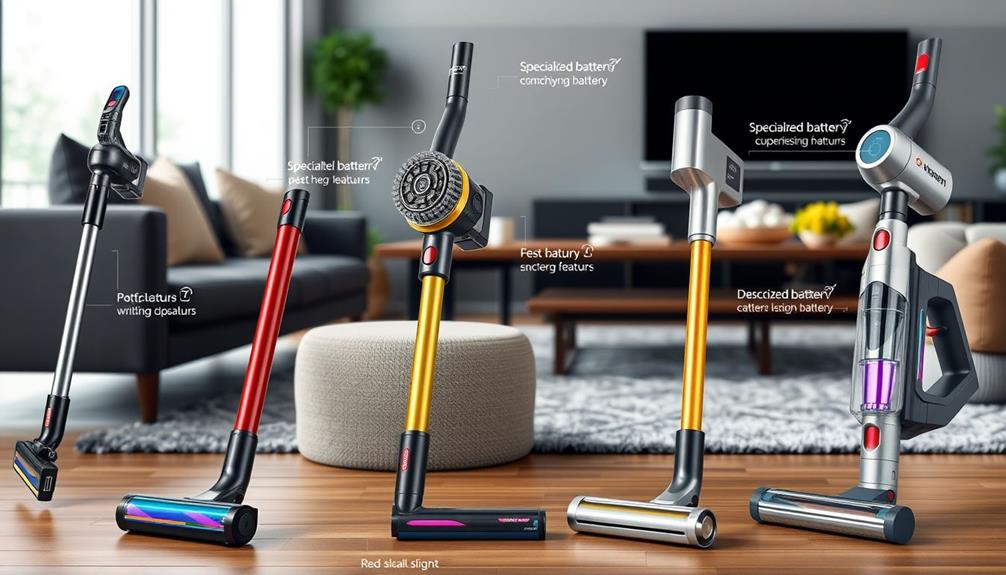
Cordless vacuums have evolved considerably, offering specialized features that cater to diverse cleaning needs. These advancements enhance your cleaning experience, making it easier to tackle pet hair, dirt, and debris efficiently.
| Specialized Feature | Description |
|---|---|
| Advanced Dirt Detection | Automatically adjusts suction power based on debris type and amount. |
| Hair-Detangling Floorhead | Reduces hair wrap, improving cleaning efficiency for pet owners. |
| Laser Technology | Illuminates hidden dust on hard floors for thorough cleaning. |
Models like the Dyson Gen5detect utilize advanced dirt detection to optimize suction power, ensuring you get the best clean possible. If you have pets, the Shark Stratos Cordless features a hair-detangling floorhead, reducing the hassle of hair wrap. For those who want versatility, the Tineco Floor One S7 Pro combines vacuuming and mopping, allowing you to switch between dry and wet cleaning tasks effortlessly. Meanwhile, the Samsung Jet 85 Pet's mini pet brush attachment makes it a breeze to remove stubborn pet hair from upholstery and carpets. These specialized features greatly enhance cleaning efficiency and overall satisfaction with your cordless vacuum.
Budget-Friendly Cordless Options
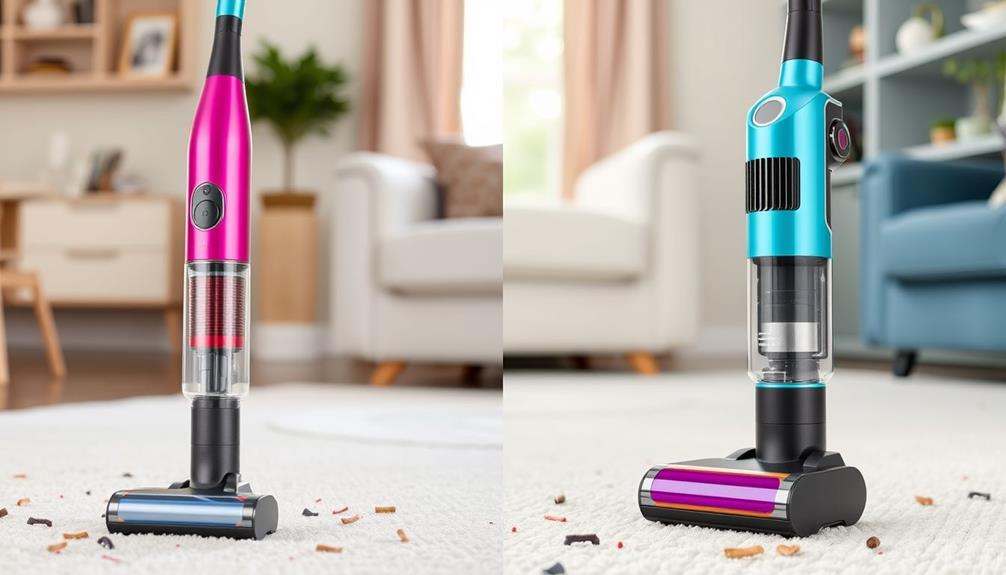
When it comes to choosing a cordless vacuum, budget-friendly options don't skimp on performance, especially when considering the benefits of diversifying investments in your home cleaning tools.
Take the Henry Quick, for example. Weighing just 3.2 kg, it offers an impressive runtime of 70 minutes, making it perfect for those longer clean-ups.
If you're looking for something lightweight, the Shark WandVac System is an excellent choice at 5.9 lbs, providing 16 minutes of runtime for quick clean-ups in small spaces.
The Halo Capsule X Pet Max delivers strong suction power on carpets while remaining affordable at 5.7 lbs and boasting a 60-minute runtime.
For those wanting adjustable features, the Tineco Pure One S15 Pro weighs in at 3.1 kg and offers 40 minutes of runtime with various power settings you can adjust based on debris size.
Comparing Shark and Dyson
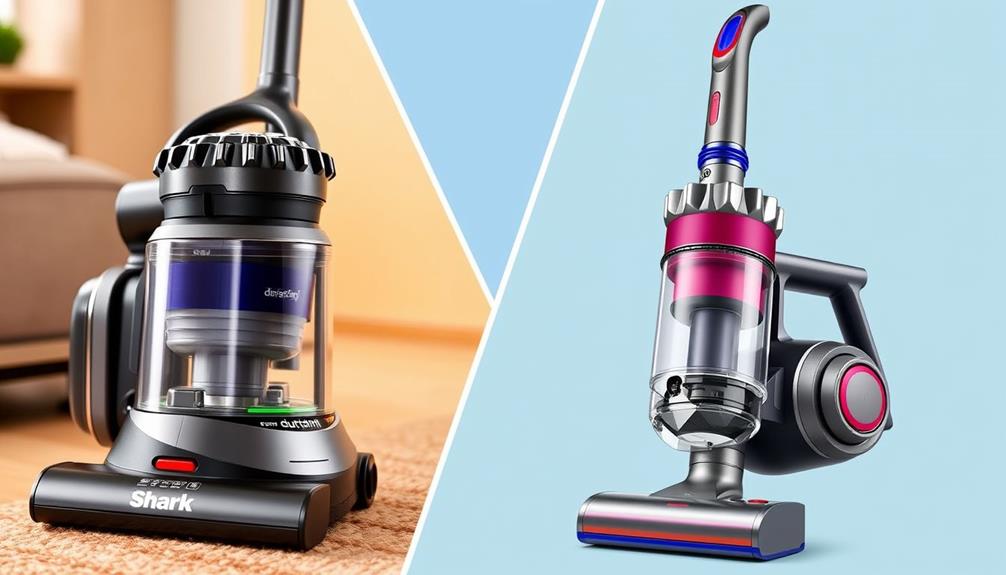
When comparing Shark and Dyson vacuums, you'll notice distinct differences in price, performance on carpets, and battery life.
Shark models typically offer affordability and solid everyday cleaning, making them a great choice for those on a budget. Additionally, their lightweight design allows for easy maneuverability, which is ideal for various cleaning tasks advanced features for enhanced security.
In contrast, Dyson's superior suction power shines on carpets, making them a top pick for deep cleaning.
Understanding these factors will help you decide which brand best suits your cleaning needs.
Price Comparison Overview
Looking to compare prices between Shark and Dyson vacuums? You'll find that Shark generally offers more affordable options, making it a budget-friendly choice for those in the market for a cordless vacuum.
For instance, the Shark Stratos is priced around $400, while Dyson's V15 Detect comes in at approximately $630. Additionally, best websites to earn money online can provide insights into how to fund your home cleaning upgrades.
When it comes to suction power, Dyson models typically lead the pack. The V15 Detect boasts an impressive 230 air watts, compared to Shark's Stratos, which delivers around 200 air watts.
Battery life also varies; Shark vacuums can last from 40 to 60 minutes, while Dyson's V15 Detect offers about 60 minutes of runtime.
Shark vacuums often include additional features like anti-odor technology and hair-detangling floorheads, which may not be available in Dyson models.
Warranty offerings are similar, with both brands providing a two-year warranty, ensuring you have peace of mind regarding your purchase.
In this price comparison, consider your budget and which features matter most to you, as both brands provide solid options for different needs and preferences.
Performance on Carpets
For homeowners seeking effective cleaning solutions, the performance of cordless vacuums on carpets can make a significant difference. The Dyson V15 Detect stands out with a remarkable suction power of 230 air watts, making it exceptionally capable of tackling dirt and debris on various carpet types, including thick carpets.
Its impressive cleaning performance shines through with a 98% efficiency in mid-pile sand pickup, achieving perfect scores in black rice tests. Additionally, maintaining a clean home environment can contribute to overall well-being, similar to how holistic lifestyle approaches can alleviate menopause symptoms.
On the other hand, the Shark Stratos Cordless employs automatic power adjustment technology that enhances suction power specifically on carpets, which is particularly beneficial for picking up pet hair and larger debris.
While the Shark Stratos shows strong performance on carpets, it slightly lags behind the Dyson in overall suction power. Both brands deliver excellent cleaning capabilities on carpets.
However, many users prefer Dyson vacuums not just for their superior cleaning performance but also for their better battery life and lighter weight, which improve maneuverability on thick and plush carpets.
Ultimately, choosing between the Dyson V15 Detect and Shark Stratos will depend on your specific carpet cleaning needs and preferences.
Battery Life Analysis
Battery life is an essential factor to take into account when choosing between Shark and Dyson cordless vacuums. Shark cordless vacuums typically offer runtimes ranging from 40 to 60 minutes, while Dyson models provide between 30 to 60 minutes, depending on the suction power setting you choose.
For instance, the Shark Stratos Cordless boasts a maximum runtime of about 1 hour, whereas the Dyson V15 Detect can achieve around 60 minutes on lower settings, but may drop to under 20 minutes on max power.
Additionally, Dyson vacuums often feature intelligent battery management systems that optimize power usage based on dirt levels, enhancing battery efficiency.
Charging times also matter; Shark vacuums generally recharge in 3 to 4 hours, while Dyson models can take between 3.5 to 4.5 hours to fully recharge.
Both brands offer removable batteries in select models, allowing you to have spare batteries on hand. This can help you extend your cleaning sessions without interruption.
Ultimately, when comparing battery life, consider how much runtime you need and how the charging times fit into your cleaning routine.
Cordless Vs. Upright Vacuums
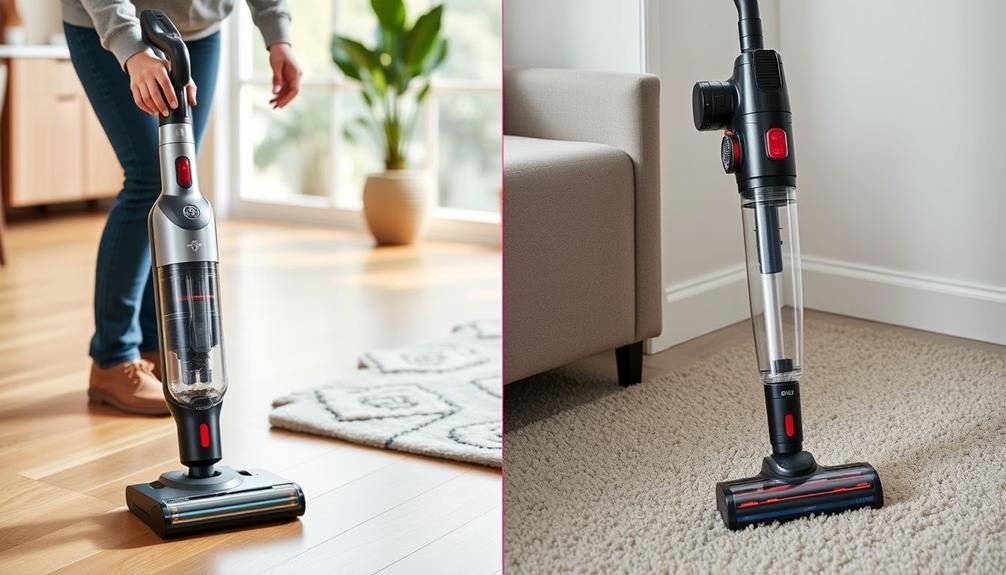
When comparing cordless and upright vacuums, you'll find that each type brings unique advantages tailored to different cleaning needs. Cordless vacuums provide excellent maneuverability and convenience, operating on rechargeable batteries, which makes them ideal for quick cleanups and tight spaces. Many modern cordless models, like the Dyson V15 Detect, boast impressive suction power, rivaling traditional upright vacuums with up to 230 air watts.
On the other hand, upright vacuums usually come with larger dustbin capacities, ranging from 1 to 2 liters, allowing for extended cleaning sessions without interruption. Their robust design often makes them more effective for deep cleaning carpets and larger areas. However, they tend to be heavier, often exceeding 10 pounds, which can make them less user-friendly.
Cordless models typically weigh between 4 to 7 pounds, making them lightweight and easy to handle. Plus, the flexibility to convert them into handheld models enhances their cleaning performance for spot cleaning.
Ultimately, your choice between a cordless and an upright vacuum will depend on your specific needs, whether you prioritize portability or robust cleaning capabilities.
Expert Testing Methodology
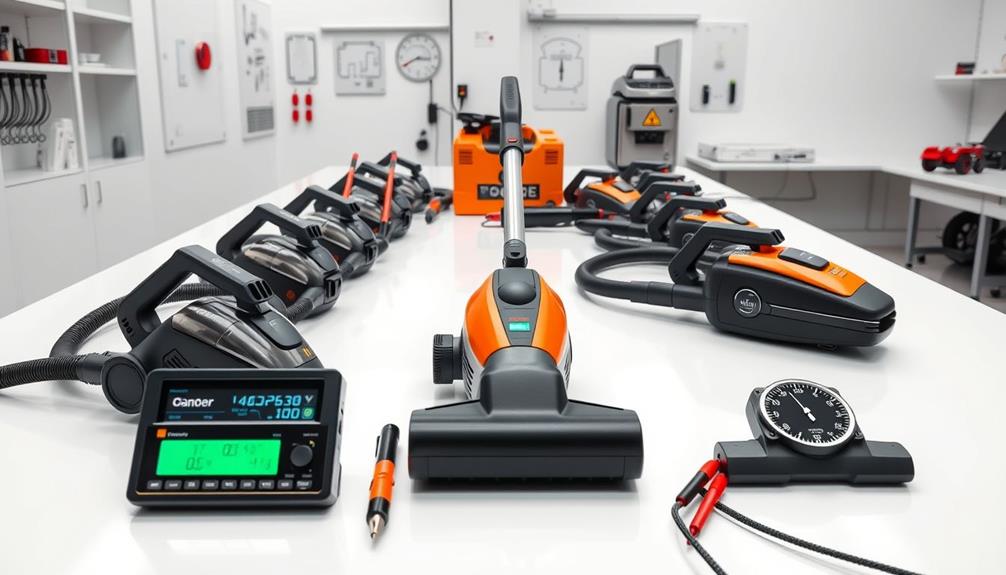
Evaluating cordless vacuums requires a rigorous expert testing methodology that scrutinizes over 100 models for vital performance metrics. This process focuses on key factors like suction power, battery life, and usability across various surfaces and debris types.
In a dedicated lab space spanning over 6,000 sq. ft., testers simulate real-life cleaning scenarios to assess maneuverability around furniture and rugs. Performance metrics include unsealed suction tests and airflow assessments measured in cubic feet per minute (CFM).
Filtration efficiency is also essential, with HEPA standards capturing 99.97% of particles at 0.3 microns. Battery efficiency tests measure runtime on a single charge, adjusting for suction power based on detected dirt levels to guarantee you're getting practical performance for everyday cleaning needs.
Regular evaluations incorporate user feedback and satisfaction scores, allowing for ongoing updates to recommendations. This guarantees that the insights reflect the latest performance assessments and market trends.
Frequently Asked Questions
Does Higher Wattage in a Vacuum Mean Better Suction?
Higher wattage in a vacuum doesn't always mean you'll get better suction. While it might indicate greater power consumption, suction performance relies on factors like design, airflow, and motor efficiency.
You should check the air watts (AW) rating instead, as it combines both airflow and suction pressure. A vacuum with lower wattage can still perform well if it's engineered effectively, so don't base your choice solely on wattage.
Look for overall cleaning efficiency.
What Is the Best Vacuum With the Most Suction Power?
Imagine a powerful whirlwind sweeping through your home, devouring dirt and debris in its path.
If you're searching for the vacuum with the most suction power, search no more than the Dyson V15 Detect. With a staggering 230 air watts, it tackles deep cleaning on all surfaces effortlessly.
If you've got pets, the Tineco Pure One S15 Pet also impresses, but for sheer raw power, the Dyson's your best bet for a spotless home.
How Much Suction Power Is Best for Vacuum Cleaner?
When choosing a vacuum cleaner, you'll want at least 120 air watts (AW) for effective cleaning on carpets and hard floors.
If you've got pets, look for models with suction power around 150 AW or higher to tackle their hair more efficiently.
Is Higher Suction Power Better?
Suction strength certainly sparks interest, but higher isn't always better.
You want a vacuum that balances power and performance. While strong suction can tackle tough dirt, it might make maneuvering tricky on certain surfaces.
Consider how often you'll clean carpets versus hard floors. Finding that sweet spot between suction power and usability guarantees you get the best cleaning experience without frustration.
Ultimately, it's about what fits your specific cleaning needs.
Conclusion
In the whirlwind world of cordless vacuums, choosing the right one can feel like finding a needle in a haystack! But fear not! With the right knowledge, you'll reveal the secrets to effortless cleaning. Imagine gliding through your home, powered by the perfect battery life and suction strength, leaving dust and dirt trembling in your wake. Whether you go for a powerhouse like Dyson or a budget-friendly gem, your cleaning routine will transform into a joyous breeze!
